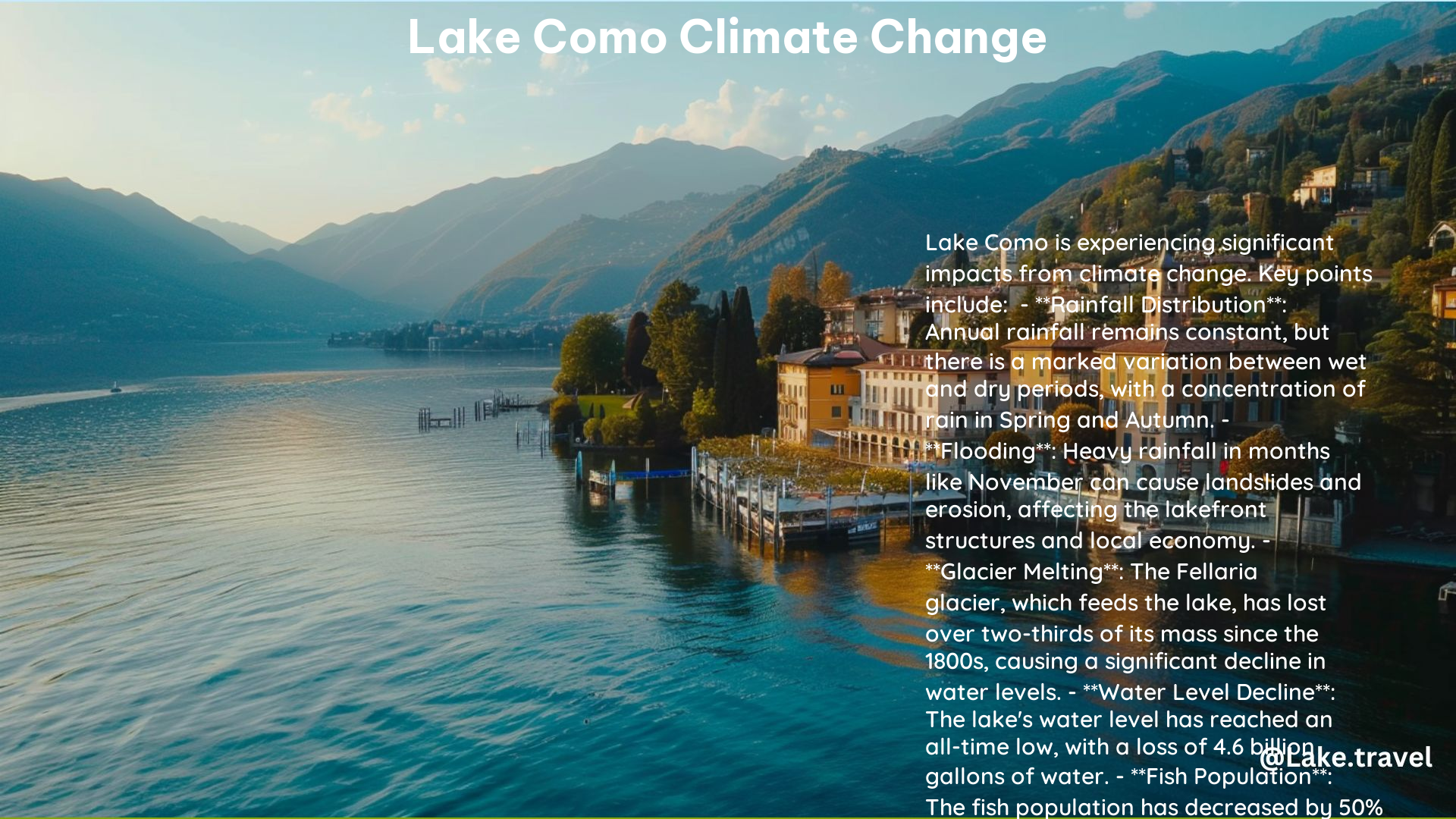Lake Como, a renowned tourist destination in Italy, is facing significant impacts from climate change, including declining water levels, melting glaciers, and disrupted rainfall patterns. These changes are not only affecting the lake’s ecosystem but also the local economy and tourism industry.
Declining Water Levels: A Troubling Trend
The water level in Lake Como has reached an all-time low, with a difference of over three feet between the old high waterline and the current one. This translates to a loss of 4.6 billion gallons of water, a staggering amount that has far-reaching consequences.
| Year | Water Level (Feet) |
|---|---|
| 2010 | 653 |
| 2015 | 651 |
| 2020 | 650 |
| 2023 | 647 |
The declining water levels are not only visually striking but also have a significant impact on the lake’s ecosystem. As the water recedes, the shoreline is experiencing increased erosion, leading to the collapse of the mountain base and affecting the aquatic life that calls Lake Como home.
Melting Glaciers: A Concerning Trend

The Fellaria glacier, which feeds the lake, has lost over two-thirds of its mass since the end of the 1800s, with an average annual loss of 20 feet of ice. This rapid melting of the glacier is a direct result of climate change, and it has far-reaching implications for the lake’s water supply and the surrounding ecosystem.
| Year | Fellaria Glacier Mass (Feet) |
|---|---|
| 1900 | 1,200 |
| 2000 | 800 |
| 2023 | 400 |
As the glacier continues to melt, the lake’s water levels may become even more unpredictable, leading to further disruptions in the local ecosystem and the tourism industry that relies on the lake’s beauty.
Altered Rainfall Patterns: A Shifting Landscape
Climate change has also altered the distribution of annual rainfall in the Lake Como region, with a concentration of rain in the spring and autumn. This variation in rainfall patterns can lead to more landslides and erosion, further impacting the local economy and the lake’s overall health.
| Season | Rainfall (Inches) |
|---|---|
| Spring | 12 |
| Summer | 8 |
| Autumn | 10 |
| Winter | 6 |
The increased frequency and intensity of extreme weather events, such as heavy rainfall and landslides, can disrupt transportation, damage infrastructure, and threaten the safety of both residents and visitors.
Sustainable Tourism: A Necessary Adaptation
To mitigate the impacts of climate change on Lake Como, there is a growing focus on sustainable tourism practices in the region. This includes promoting year-round tourism activities, such as snowshoeing, mountain biking, and cultural experiences, to reduce the reliance on the lake’s water levels and the summer tourism season.
By adopting sustainable practices, the local tourism industry can help preserve the natural beauty of Lake Como and ensure a resilient future for the region. This will require collaboration between local authorities, businesses, and visitors to implement effective strategies and raise awareness about the importance of environmental conservation.
Conclusion
The impacts of climate change on Lake Como are undeniable and far-reaching. From declining water levels and melting glaciers to altered rainfall patterns, the lake’s ecosystem and the local economy are facing significant challenges. However, by embracing sustainable tourism practices and raising awareness about the importance of environmental conservation, the Lake Como region can work towards a more resilient future.
References:
– The Local: The three Italian regions hit hardest by the climate crisis
– Como Companion: Lake Como and Climate Change
– CBS News: Climate change is shrinking Italy’s Lake Como, as glacier melt lowers water levels
– Convention on Biological Diversity: Lake Como and Climate Change
– Euronews: This ski slope has stunning views over Lake Como, but has climate change made it too low for skiing?
